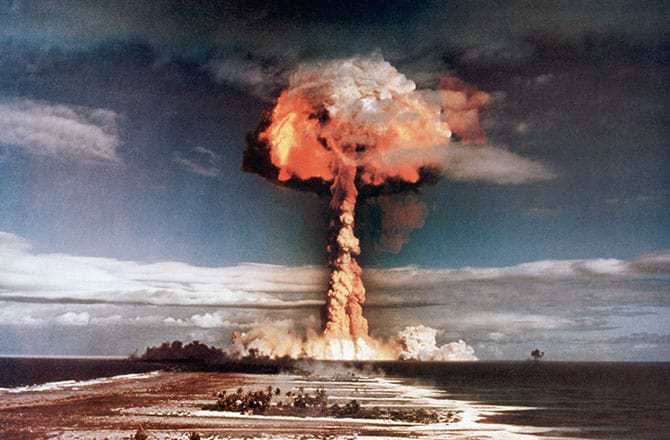The 20th Century was a time of great advancement in a variety of technological fields. Just about every aspect of life was transformed by stunning new inventions and breakthroughs. From the way people travel, to life-giving medical advancements and stunningly devastating war technology, a person living at the beginning of the 20th Century would hardly recognize what life would look like by the time the century ended.

Nuclear Technology
Nuclear technology profoundly shaped 20th Century history in both negative and positive ways. Whether good or bad, many aspects of life changed with its introduction. It deeply influenced warfare, energy production, medicine, and even household technology.
Though nuclear technology is most intimately linked with warfare, its first uses were medical. As early as the First World War, Marie Curie, who famously isolated the first radio-active element (Radium) in 1902, began to sterilize the wounds of soldiers with radon gas. She was also responsible for creating mobile x-ray machines used in the French war effort. Only later did it become known that radiation possessed harmful and even deadly side effects. While early medical experiments with radiation were limited, by the 1940s the world was thrown into another world war. This time, many governments turned their focus to the destructive potential of nuclear technology.
Knowing that Nazi Germany had already split the atom in 1939, the United States resolved to end WWII as quickly as possible. With this in mind, the U.S. began the Manhattan Project in 1941. By the next year, the world’s first successful nuclear reaction occurred in Chicago. By 1945, one nuclear bomb was successfully tested and two more were ready to be used on Japan, as Germany had already surrendered earlier that year.
With the Allied victory in WWII, new efforts to use nuclear technology in a peaceful manner were initiated. Perhaps the most useful effort came in the form of nuclear power plants that produced inexpensive and reliable electricity. Despite periodic accidents such as Three Mile Island (1979), Chernobyl (1986), and Fukushima (2011), over 10% of the world’s energy is still made with nuclear power plants. Some countries like France still rely on nuclear energy for over 75% of its electrical power.
Energy production is not the only area where nuclear technology is used for peaceful purposes, however. The medical field renewed its interest during the latter half of the 20th Century, developing a variety of new scanning and diagnosing technologies, as well as cancer treatments. There are even small amounts of radioactive material in many smoke detectors, which save thousands of lives each year.

